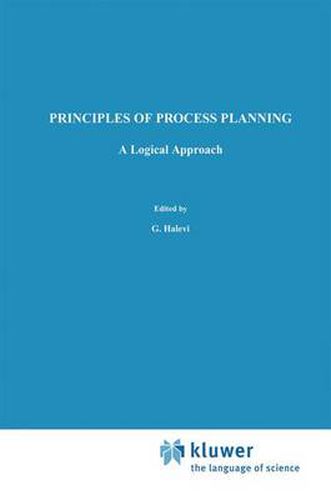Readings Newsletter
Become a Readings Member to make your shopping experience even easier.
Sign in or sign up for free!
You’re not far away from qualifying for FREE standard shipping within Australia
You’ve qualified for FREE standard shipping within Australia
The cart is loading…






This title is printed to order. This book may have been self-published. If so, we cannot guarantee the quality of the content. In the main most books will have gone through the editing process however some may not. We therefore suggest that you be aware of this before ordering this book. If in doubt check either the author or publisher’s details as we are unable to accept any returns unless they are faulty. Please contact us if you have any questions.
Process planning determines how a product is to be manufactured and is therefore a key element in the manufacturing process. It plays a major part in determining the cost of components and affects all factory activities, company competitiveness, production planning, production efficiency and product quality. It is a crucial link between design and manufacturing. There are several levels of process planning activities. Early in product engineering and development, process planning is responsible for determining the general method of production. The selected general method of production affects the design constraints. In the last stages of design, the designer has to consider ease of manufacturing in order for it to be economic. The part design data is transferred from engineering to manufacturing and process planners develop the detailed work package for manufacturing a part. Dimensions and tolerances are determined for each stage of processing of the workpiece. Process planning determines the sequence of operations and utilization of machine tools. Cutting tools, fixtures, gauges and other accessory tooling are also specified. Feeds, speeds and other parameters of the metal cutting and forming processes are determined.
$9.00 standard shipping within Australia
FREE standard shipping within Australia for orders over $100.00
Express & International shipping calculated at checkout
This title is printed to order. This book may have been self-published. If so, we cannot guarantee the quality of the content. In the main most books will have gone through the editing process however some may not. We therefore suggest that you be aware of this before ordering this book. If in doubt check either the author or publisher’s details as we are unable to accept any returns unless they are faulty. Please contact us if you have any questions.
Process planning determines how a product is to be manufactured and is therefore a key element in the manufacturing process. It plays a major part in determining the cost of components and affects all factory activities, company competitiveness, production planning, production efficiency and product quality. It is a crucial link between design and manufacturing. There are several levels of process planning activities. Early in product engineering and development, process planning is responsible for determining the general method of production. The selected general method of production affects the design constraints. In the last stages of design, the designer has to consider ease of manufacturing in order for it to be economic. The part design data is transferred from engineering to manufacturing and process planners develop the detailed work package for manufacturing a part. Dimensions and tolerances are determined for each stage of processing of the workpiece. Process planning determines the sequence of operations and utilization of machine tools. Cutting tools, fixtures, gauges and other accessory tooling are also specified. Feeds, speeds and other parameters of the metal cutting and forming processes are determined.